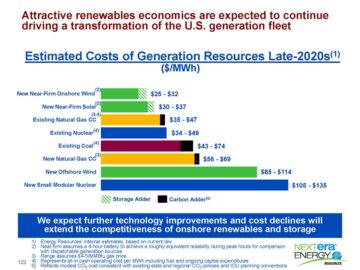Winter reliability risk is a fossil fuel problem, not a renewable energy problem.
Winter is here, and with it comes a heightened responsibility for electric providers to keep the lights on. Winter Storm Uri in 2021 made that responsibility painfully clear, as it cost over 200 people their lives and left nearly 4.5 million people without power. Moreover, such extreme weather events, including severe winter weather events, are projected to become more common due to climate change. And, as the temperature drops, the heat from the fossil fuel industry increases. As such, building a reliable grid that can perform in extreme winter weather is imperative.
The Myth
Renewables and the energy transition at large have frequently been used as the scapegoat for winter reliability concerns. And language commonly used to describe fossil resources like “firm” and “dispatchable” make these plants sound as if we can count on them when we need them.
The Reality
The idea that renewables have caused winter outages has been repeatedly debunked. And in fact, we can’t always count on fossil power plants to show up when we need them most. Coal and gas plants, for example, made up 73 percent of the capacity of generators that experienced unplanned outages or derates during Winter Storm Uri. While no resource is perfect, the reality is that clean energy and demand-side resources have proven track records of both reducing peak demand and keeping the lights on during extreme conditions, while fossil fuels, especially gas, are increasingly showing cracks.
Fossil Fuel Risks
The North American Electric Reliability Corporation (NERC) recently released its annual Winter Reliability Assessment that evaluates the preparedness of the grid for winter weather conditions. It expresses serious concerns about the ability for much of the country, including New England and parts of the Midwest, Southeast, and Texas, to keep the lights on during extreme winter weather events. The primary winter reliability risks highlighted by NERC relate to fossil generators and their fuel supply — not renewables. In particular, NERC highlights inadequate winterization of fossil fuel infrastructure (at power plants themselves and along their fuel supply chains), and scarcity of coal and gas supply during freezing conditions.
To draw attention away from these concerns, fossil fuel advocates are quick to point out that output from renewable energy resources like solar and wind depend on conditions such as time of day or the weather, so can’t be counted on for reliability. In fact, grid planners have developed sophisticated approaches to capture the contributions of these resources to reliability that reflect their performance under different weather conditions, as well as interactions with other resources, such as battery storage.
Historically, however, grid planners and operators have failed to apply these same approaches to fossil resources, allowing the reliability of fossil generators to be overestimated. A recent study suggests that planners may be overestimating gas plant reliability by over 20 percent in parts of the eastern United States, and a similar trend was found in the Texas grid. Low-hanging fruit for improving winter reliability is to better capture the true availability of fossil resources in the planning process, and fortunately, several grid operators are considering doing so.
Ensuring Winter Reliability
Regulators, utilities, and market operators need to recognize the risks inherent in a fossil-fuel dominated power system and evaluate alternatives to fossil fuels to ensure winter reliability. Fortunately, there are several cleaner, safer, and more effective options:
- The accelerated expansion of renewable energy and storage, resources without the risks the fossil fuel system brings during extreme cold, can increase grid reliability when the temperature drops. Moreover, energy efficiency and demand response programs (both on the electric and emergingly on the gas side), have been shown to enhance winter reliability by reducing demand during extreme conditions. In other words, programs that invest in home efficiency, such as insulation and heat pumps, have the potential to meaningfully reduce the risk of outages during extreme winter weather. Ensuring that the value of these programs is being captured in grid planning, that utilities are evaluating these options properly against fossil resources, and that grid operators are eliminating the backlog of renewable resources waiting to interconnect to the grid, is essential to unlocking a reliable and affordable grid now and in the future.
- The buildout of regional and interregional transmission, which can allow available excess energy to be transferred to regions experiencing shortages, will allow for existing resources to be more optimally utilized and shared in tight conditions, saving money, improving grid reliability, and keeping the lights on without building expensive fossil fuel power plants. Grid operators need to continue breaking down the barriers to building new transmission in their regions, and regulators need to ensure that utilities are evaluating the value of transmission expansion in their resource plans.
- Improved reliability standards for all grid resources (including winter weather preparedness standards and standards for inverter-based resources) will additionally increase the resilience of our grid in the face of extreme weather. Enforcement of these standards at the state level will lead to more reliable service for ratepayers.
Despite this broad and dependable set of solutions available to support grid reliability, some authorities continue to advocate for fossil fuels to address long-term reliability challenges. We need a grid that can reliably operate through the winter, but relying on fossil plants and assuming there will be a steady fossil fuel supply is both risky and expensive, especially during extreme weather. Furthermore, the use of fossil fuels in our power system has become increasingly uneconomic, continues to perpetuate extreme weather through climate change, and creates additional air pollution and negative health consequences for local communities. Rather, we can achieve better outcomes by leaving fossil fuels prone to winter failures in the past, while embracing the transition to clean energy now and in the future.
By Ashtin Massie, Aaron Schwartz
© 2022 Rocky Mountain Institute. Published with permission. Originally posted on RMI Outlet.
Complete our 2022 CleanTechnica reader survey for a chance to win an electric bike.
Appreciate CleanTechnica’s originality and cleantech news coverage? Consider becoming a CleanTechnica Member, Supporter, Technician, or Ambassador — or a patron on Patreon.
Don’t want to miss a cleantech story? Sign up for daily news updates from CleanTechnica on email. Or follow us on Google News!
Have a tip for CleanTechnica, want to advertise, or want to suggest a guest for our CleanTech Talk podcast? Contact us here.
Advertisement
- SEO Powered Content & PR Distribution. Get Amplified Today.
- Platoblockchain. Web3 Metaverse Intelligence. Knowledge Amplified. Access Here.
- Source: https://cleantechnica.com/2022/12/24/how-to-keep-the-lights-on-in-extreme-winter-weather/
- 1
- a
- ability
- About
- accelerated
- Achieve
- Additional
- Additionally
- Advertise
- advocate
- advocates
- against
- AIR
- Air pollution
- All
- Allowing
- alternatives
- always
- American
- and
- Apply
- approaches
- attention
- Authorities
- availability
- available
- barriers
- battery
- become
- becoming
- being
- Better
- Breaking
- Brings
- broad
- Building
- capture
- caused
- chains
- Chance
- change
- clean energy
- clear
- Climate
- Climate change
- Coal
- Common
- commonly
- Communities
- Concerns
- conditions
- Consider
- considering
- continue
- continues
- contributions
- CORPORATION
- Cost
- country
- coverage
- creates
- day
- Demand
- demand response
- dependable
- describe
- different
- doing
- down
- Drops
- during
- eastern
- Effective
- efficiency
- Electric
- eliminating
- embracing
- energy
- enforcement
- England
- ensure
- especially
- essential
- evaluate
- events
- example
- existing
- expansion
- expensive
- experienced
- experiencing
- extreme
- Face
- Failed
- Fortunately
- Fossil fuel
- fossil fuels
- found
- Freezing
- frequently
- from
- Fuel
- Furthermore
- future
- GAS
- generators
- Grid
- Guest
- heightened
- here
- Highlighted
- highlights
- Home
- How
- How To
- However
- HTML
- HTTPS
- idea
- imperative
- improving
- in
- In other
- Including
- Increase
- Increases
- increasingly
- industry
- Infrastructure
- inherent
- interactions
- Invest
- IT
- Keep
- keeping
- language
- large
- lead
- leaving
- Level
- Lives
- local
- made
- make
- Market
- member
- million
- money
- more
- most
- nearly
- Need
- negative
- New
- news
- North
- operate
- operators
- Options
- originality
- originally
- Other
- Outages
- particular
- parts
- past
- Peak
- People
- percent
- perfect
- perform
- performance
- permission
- planning
- plans
- plants
- plato
- Plato Data Intelligence
- PlatoData
- podcast
- Point
- Pollution
- posted
- potential
- power
- power plants
- primary
- Problem
- process
- Programs
- properly
- proven
- providers
- published
- pumps
- Quick
- Reader
- Reality
- recent
- recently
- recognize
- records
- reduce
- reducing
- reflect
- regional
- regions
- Regulators
- released
- reliability
- reliable
- Renewable
- renewable energy
- Renewables
- REPEATEDLY
- resilience
- resource
- Resources
- response
- responsibility
- Risk
- risks
- Risky
- rocky
- safer
- same
- saving
- Scarcity
- serious
- service
- set
- several
- shared
- shortages
- show
- shown
- sign
- similar
- So
- solar
- Solutions
- some
- Sound
- standards
- State
- States
- steady
- storage
- Storm
- Story
- such
- Suggests
- supply
- Supply chains
- support
- supporter
- system
- Talk
- texas
- The
- The State
- their
- themselves
- Through
- time
- tip
- to
- track
- transferred
- transition
- Trend
- true
- under
- United
- United States
- unlocking
- Updates
- us
- use
- utilities
- utilized
- value
- Waiting
- Weather
- which
- while
- will
- wind
- Winter
- without
- words
- youtube
- zephyrnet








